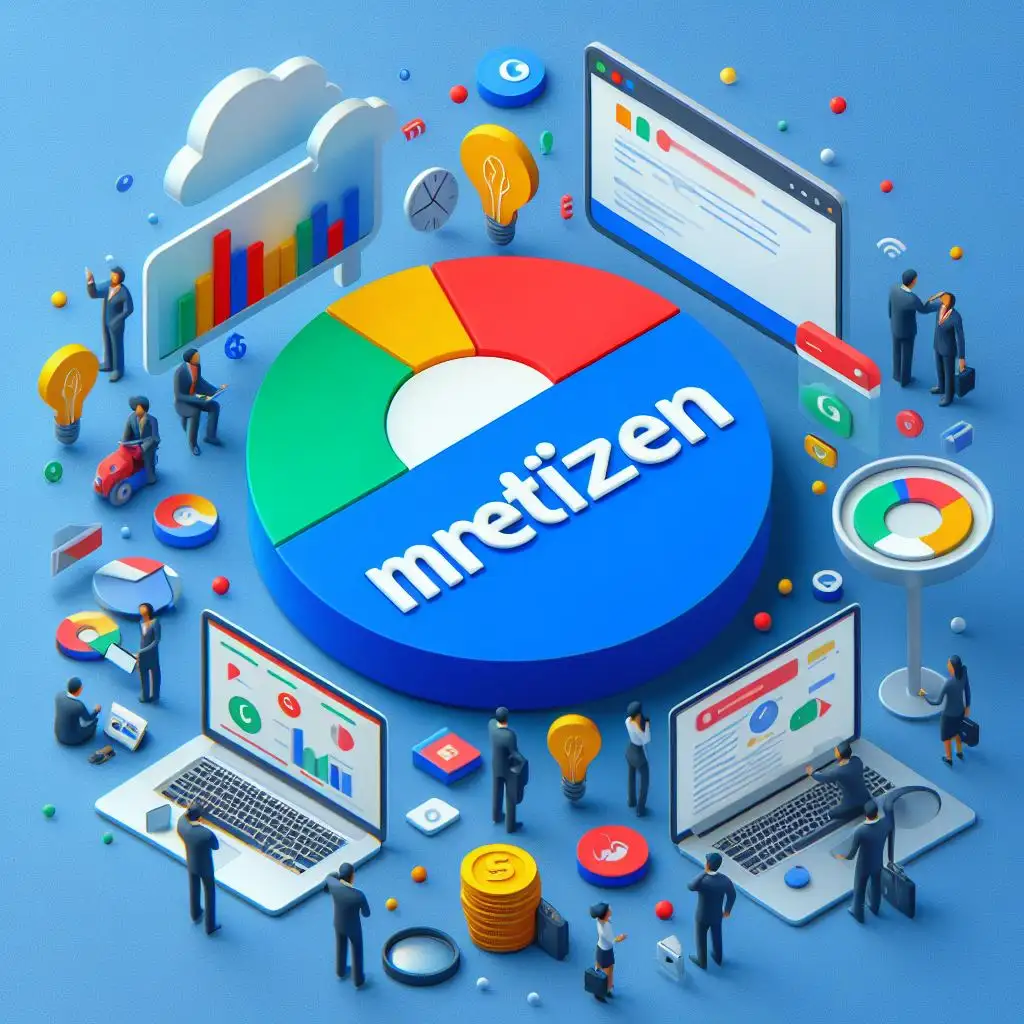AI can no longer be described as an idea only science fiction writers can imagine but as one of the core components of modern computing that has changed numerous aspects of people's lives and businesses. If there is anything AI hasn't touched, we just might find it here.
Understanding Artificial Intelligence
What Is Artificial Intelligence?
Artificial intelligence is the ability of computerized systems or software to accomplish tasks that would otherwise require human intellect or rationalization. These include problem-solving, decision-making, language comprehension, and the ability to recognize patterns. Artificial intelligence is essentially intelligent machines that Acquire information with the purpose of learning, process this information to adjust effectively to new experiences, and apply this information to accomplish activities independently.
AI can be categorized into two broad types:
- Narrow AI: Another term for this type of AI is Narrow AI, which is trained and created to perform a particular set of tasks or only a few of them. Examples of applications are virtual personal assistants like Siri or Alexa and recommendation services such as the ones on Netflix.
- General AI: It is another name for Artificial General Intelligence or AGI since this kind of artificial intelligence is designed to feature the potential to learn, comprehend like the human brain, or be intelligently resourceful. General AI is still more or less an abstract concept and is still studied and developed.
Key Components of AI
- Machine Learning (ML): As a subfield of AI, ML deals with techniques that use statistical patterns involving computers and programming languages to allow the computer to know or learn how a particular task is done without having to be told how by a programmer. However, systems learning is based on patterns and inference. Some of the categories of ML are Supervised learning, Unsupervised learning, and Reinforcement learning.
- Natural Language Processing (NLP): NLP enables computers to acquire and comprehend the ability to process and produce human language. It lies at the heart of chatbots, translation, and voice-activated assistants.
- Computer Vision: It allows using inputs from video to make decisions and understand visual information provided to machines. Some of the uses of this technique include face identification, objects, and vehicles on the roads.
- Robotics: Robotics as a field entails the creation, fabrication, and control of robots. AI robotics can either replace humans' power to do certain tasks or supplement humans' tasks in domains such as industrial applications and household enhancement.
AI in Everyday Applications
Virtual Assistants
Smart, voice-activated assistants such as Amazon’s Alexa, Apple's Siri, and Google Assistant have become part of people's lives. Some of these quangos employ NLP and machine learning to interpret patient commands, respond to queries, book appointments, and regulate smart house electronics. Due to their capability of understanding natural language and training from user interactions, these bots are very helpful to many people in completing tasks and enhancing efficiency.
Impact:
- Increased Convenience: They help manage a day by fixing reminders, sending messages, and even giving weather updates.
- Enhanced Accessibility: They have voice command assistance, which is very helpful, especially for people with disabilities.
- Personalization: They become accustomed to the users' preferences and, as a result, provide the users with more relevant and personalized suggestions.
Recommendation Systems
Recommender systems are common in digital platforms powered by artificial intelligence, such as Netflix, Amazon, and Spotify. These systems examine user information and their tendencies in interest to recommend content, goods, or services that fit individual choices, wants, or demands. With the help of ML algorithms, recommendation systems improve user satisfaction and can increase user engagement.
Impact:
- Enhanced User Experience: Recommendations enhance the search of content and articles or products and services to be bought.
- Increased Engagement: This is because users who get suggestions that are specific to them tend to spend more time on the site, hence the higher retention rates.
- Data Utilization: They use user data to tune up recommended content and target audiences correctly.
Autonomous Vehicles
The advances in the automotive industry are slowly affecting the industry in the aspect of self-driving cars. Tesla and Waymo have been competing in developing and manufacturing self-driving cars that incorporate Artificial Intelligence for navigation, decision-making, and sensing of the environment surrounding the vehicle. Safety and efficiency come from such components as computer vision, sensor data, and machine learning.
Impact:
- Improved Safety: Self-driving cars powered by artificial intelligence can be a safer means of transport, avoiding incidences common to human drivers.
- Efficiency and Convenience: Self-driving saves time due to less traffic congestion, making traveling easier.
- Economic Implications: Autonomous vehicles are likely to affect one industry or another in areas such as transportation, automobile insurance, and city planning.
Artificial intelligence and Business Intelligence
Healthcare
The perspective of integrating AI in healthcare institutions is constantly developing as it contributes to enhancing the accuracy of diagnostics, increasingly effective treatment, and higher quality of patient care. Through such applications as image analysis, it is possible to diagnose diseases at preliminary stages, including cancer, develop unique treatment plans, and even assess the prospects of the patient. This advancement involves enhancing an organization's healthcare system by incorporating artificial intelligence to provide better medical services.
Impact:
- Early Detection: AI improves patients' diagnosis and raises the chances of identifying ailments at early stages and treating them.
- Personalized Medicine: In medical practice, personalized medicine assists in optimizing therapy plans since a patient's treatment depends on their genetic profile and personal history.
- Operational Efficiency: AI saves time in paperwork, eliminates additional human errors in healthcare facility management, and improves utilization of available resources.
Finance
In finance, AI applies fraud detection through analyzing patterns, algorithmic buying and selling, and dealing with customer care solutions. Marketing activities: AI systems monitor and evaluate large volumes of transactional data to detect fraudulent activities and make investment decisions based on market trends, as well as offer financial advice through chats.
Impact:
- Fraud Prevention: This means that artificial intelligence relieves the computations of samples of behaviors that indicate probable fraudulent schemes and prevents them in close to real-time.
- Algorithmic Trading: Automated trading systems use artificial intelligence to examine trends and generate results for trading in the financial market and making trades at very high speeds.
- Enhanced Customer Service: Virtual assistants, also called chatbots, offer customers instant assistance and financial advice.
Manufacturing
It has become a game-changer in the manufacturing industry by predicting equipment failure for maintenance, improving product quality, and improving supply chain efficiencies. AI systems can alert on the equipment failure before it happens, assess the product quality instantly, and find ways of minimizing the supply chain costs.
Impact:
- Predictive Maintenance: AI predicts the maintenance required for equipment so that it minimizes equipment downtime and the total costs of maintenance.
- Quality Control: Withis makes it easier to monitor production processes, improving quality and eliminating any signs of inconsistency.
- Supply Chain Optimization: It optimizes the inventory, demand records, and supply chain, thus reducing costs and increasing operational efficiency.
The Advantages of Artificial Intelligence in Contemporary Computing
Enhanced Efficiency
AI improves productivity because it reduces the amount of time spent on tasks that machines can do, rationalizes business processes, and presents data that the human mind would find hard to decipher. Most time-consuming activities can be automated, allowing human resources to engage in other productive tasks, thereby enhancing productivity.
Impact:
- Automation: AI makes work easier by minimizing the amount of work done manually by performing tasks such as data entry, interacting with customers, and stock control.
- Process Optimization: Artificial Intelligence deals with data to improve workflow, supply chain, operations, and many others.
- Productivity Gains: By automating simple tasks, executives/managers or other employees can work on more important tasks.
Improved Accuracy
AI systems, especially machine learning systems, are capable of processing and analyzing big data with high accuracy. This leads to more accurate prognosis, clinical diagnosis, and advice than the conventional process.
Impact:
- Data Analysis concerns the ability of analytical tools such as AI to discover patterns in large datasets that enable decision-making.
- Predictive Analytics: AI models are good at making forecasts or predictions, which can be applied in fields such as finance, health, and business markets.
- Error Reduction: AI lessens the possibility of mistakes in what people do, such as entering data, diagnosing diseases, and handling funds.
Personalization
AI helps users provide a much higher level of personalization for the services they provide. With the help of AI, analyzing users' data and their behavior, content, recommendations, and interactions concerning individual users can be optimized, which will increase satisfaction.
Impact:
- Customized Recommendations: The basic concept of AI is to customize specific content, products, or services based on user preferences.
- Adaptive Interfaces: Smart interfaces can adapt to users' particular needs, enhancing general usability and user experience.
- Enhanced Customer Engagement: Interactions tailored to a user lead to a high level of satisfaction.
Innovation
AI facilitates advanced developments within different areas of endeavor due to the new technologies and uses it can enable. These range from crafting new medicinal drugs to the emergence of new forms of robotics—opportunities that could not have been conceived earlier.
Impact:
- New Technologies: AI is instrumental in creating sophisticated technologies, including self-driving cars, AI healthcare solutions, and smart cities.
- Research and Development: AI supports and increases the rate of ideas and inventions since it can analyze big amounts of data and statistically determine trends.
- Cross-Industry Applications: AI creates a favorable environment for innovation within a variegated spectrum, some of which are funding, medical, production, and entertainment.
Challenges and Ethical Considerations
Data Privacy and Security
Another crucial aspect of AI that worries people a lot is the issue of data about people. AI systems usually work autonomously and accumulate data, and the use of such systems raises questions about the privacy and security of users' data. Data protection is important to avoid the misuse of users' information through improper data collection, storage, and use.
Challenges
- Data Breaches: AI systems dealing with big data and transactional information are prone to data leakages and hacker attacks.
- Privacy Concerns: Privacy and user consent are among the issues associated with collecting and analyzing personal data.
- Regulatory Compliance: Companies must comply with many rules and regulations to protect individuals' data. Some popular regulations are the General Data Protection Regulation (GDPR) and the California Consumer Privacy Act (CCPA).
Bias and Fairness
Bias in an AI system resulting from the nature of the training data set may lead to amplification of the bias in the result. This can result in inequity and discrimination of customers based on the approximate method of coding used to collect their responses. Reducing bias in AI and making it fair remains a task that developers and researchers will accomplish in the future.
Challenges:
- Bias in Training Data: It has been found that a set of algorithms learned through biased data can also give biased output, which can cause discrimination.
- Algorithmic Transparency: Two accountability over bias in decision-making is best solved by shedding light on decision-making.
- Ethical Considerations: Fairness and equity should be maintained in AI deployment, as this is key to the development of ethical AI.
Job Displacement
Due to this advancement, several workplaces can be at risk of losing some of their workers to automation through artificial intelligence. On the one hand, it opens new opportunities for society and the economy. Still, on the other hand, it is also a process that changes the skills and training that are needed for the available vacancies. This brings another important concern with regard to arrangements for the transition, which remains smooth and fair.
Challenges
- Job Loss: Robotic integration raises a major concern about unemployment because, in industries where most of the work involves repetitive activities, robots will replace workers.
- Skill Gaps: The need to fill new positions and expand specializations in artificial intelligence may be required to grow faster than there are qualified applicants.
- Economic Impact: Vulnerable individuals may be affected differently in terms of income earnings, opportunities for employment, and general standards of living.
Transparency and Accountability
Artificial intelligence adaptive systems have been described as working in such a way that one cannot comprehend how they arrive at certain conclusions. Making the AI decision-making process more transparent and implementing accountability measures must be crucial to gaining public trust and using AI for good.
Challenges:
- Decision Transparency: Some or many of the decision-making processes may not be transparent, making it hard to explain why a certain output was arrived at.
- Accountability: Finally, the paper finds that increasing accountability for AI decisions and actions is crucial.
- Regulatory Frameworks: It can, therefore, be argued that searching for the right regulatory paradigms to warrant the efficiency of AI applications while insisting on transparency and accountability is a continuous process.
Implications of the Application of Artificial Intelligence in Computing
AI and Quantum Computing
There are great promises for the renewal of solving issues arising from the incorporation of AI with quantum computers. Machine learning integrated with quantum computers can be the next big leap in pattern recognition and data analysis, paving the way for solutions to problems not solved before across areas such as security, pharmacology, or meteorology.
Future Prospects
- Accelerated Computation: Quantum computers can boost AI computational capability so that it becomes more precise and can handle more data in real time.
- Advanced Research: Quantum AI's new approach can also enhance our understanding of various topics, such as material science, drug discovery, and even climate change.
- New Applications: The integration of artificial intelligence and quantum computing could improve existing solutions and emerge hitherto unimagined solutions, which will be possible due to the synergy of the two computing paradigms.
AI in Creativity
There is a growing application of AI in creative mediums like music and the arts, as well as in writing. Image generative models can also generate compositions that could be grouped into music, artworks, and even textual works, where humans and machines can collaborate in producing new and innovative forms of art.
Future Prospects:
- Creative Collaboration: AI can engage artists, musicians, or writers to generate original ideas and works of art.
- New Artistic Forms: Artificial intelligence is creativity that brings new methods of creating art and extends the limits of fine art.
- Enhanced Accessibility: AI technologies can increase the incidence of art making and, therefore, make such processes more accessible to a larger population of society.
AI and Human Augmentation
Further developments in Artificial Intelligence may result in even better human enhancement devices. Advanced prosthetics, brain-computer interfaces, and improved cognitive functioning. It is important to understand that all these technologies have the potential to boost human capabilities and the quality of human lives.
Future Prospects:
- Advanced Prosthetics: Advanced prosthetic technology using AI can provide better performance and skill that will lead to increased life satisfaction for people with some level of disability.
- Brain-Computer Interfaces: AI can mean direct interaction of the brain with computers to support new forms of interaction and control.
- Cognitive Enhancement: AI can enrich cognitive skills;-this can be taken in terms of memory enhancement, learning, and decision-making processes.
- Ethical AI Development
- More specifically, when analyzing the further development of the AI sphere, the main attention will be paid to creating ethical AI systems. This little work comprehends codes and regulations related to AI development, solving AI's effects on society, and forming AI for the greater good.
- Future Prospects:
- Ethical Guidelines: Create policies that will govern the use of artificial intelligence to make proper use of technology in society.
- Societal Impact: Social consequences and effects of Artificial Intelligence solutions with a focus on fairness and other social aspects.
- Global Collaboration: Encouraging the cooperation of nations and international organizations to set up and enforce the norms of using AI
Conclusion
The effect of artificial intelligence on current computing is unappreciable, but it brings about a change in technology. From improving traditional human activities to stimulating progress in numerous fields, AI is revolutionizing practice and human interface with technologies and the environment. As we see, AI possesses more advantages in terms of efficiency, accuracy, and individual customization, but it was discovered that it has some limitations and ethical concerns. In the same manner, due to continuous growth in the AI field, there is a possibility of increased chances of more innovation, more improvement of human existence, and more business opportunities. This means that we need to address the opportunities and risks that come with the implementation of AI rationally and reasonably.


























